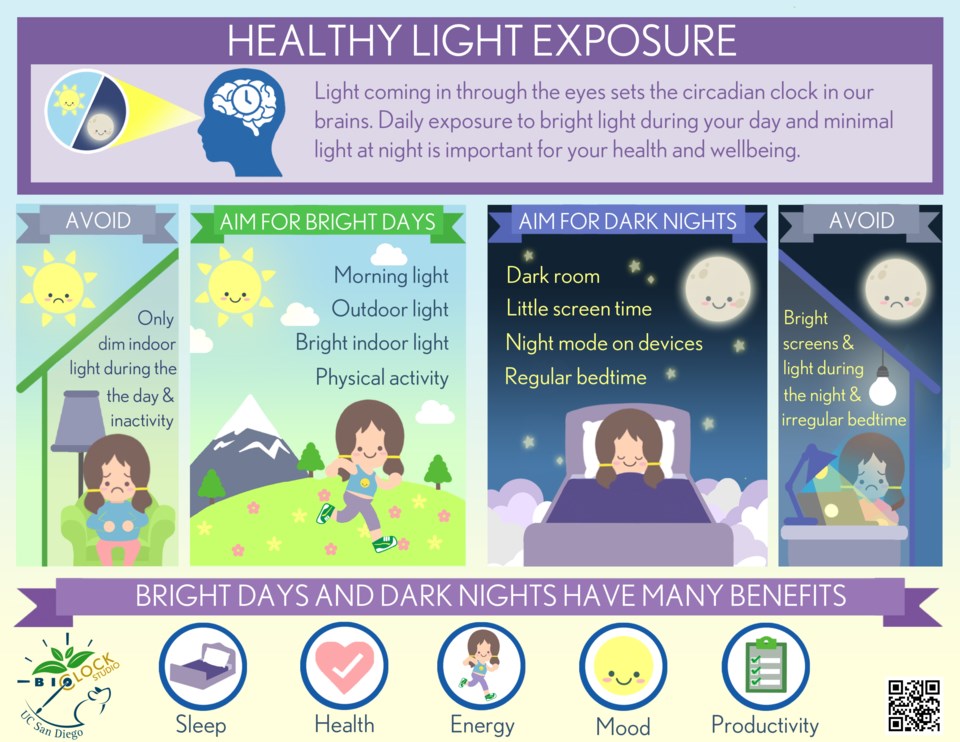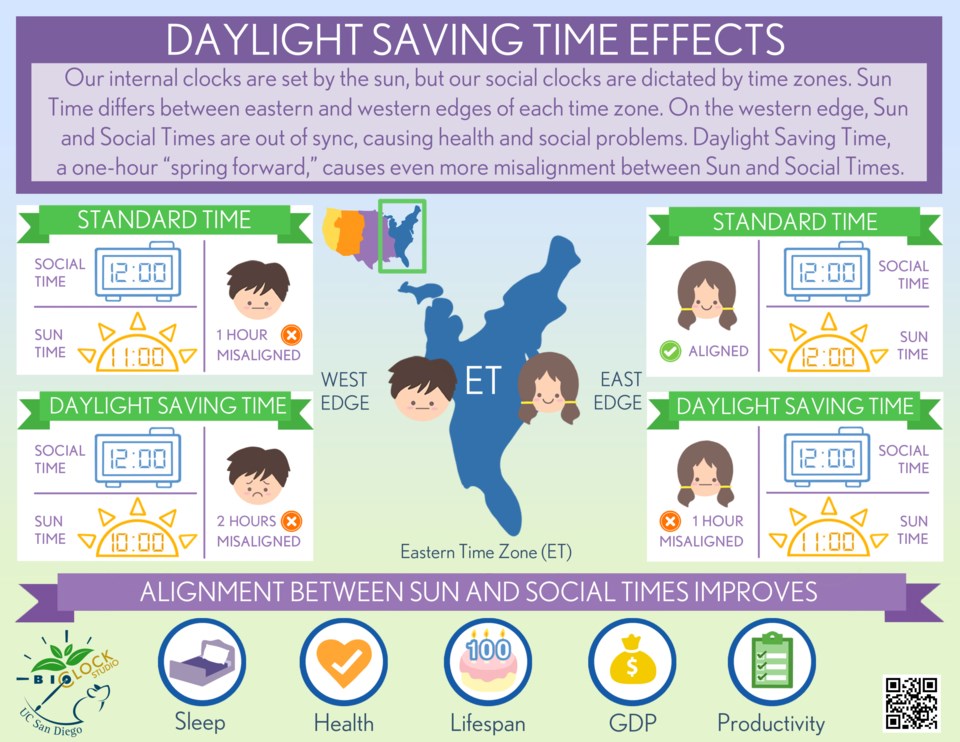On the eve of another seasonal time change, Premier John Horgan has suggested this will be the last time British Columbians will have to turn their clocks back — and that has many sleep scientists worried.
On Sunday, Nov. 1, at 2 a.m., clocks across the province will fall back an hour, and in so doing, align millions of people’s daily rhythms with the sun.
“One more season of patience. If the [United States] does not get its act together, I would suggest this is the last season of falling back and springing forward,” Horgan recently told Global News.
B.C., Washington and Oregon have passed legislation to eliminate seasonal time changes and most Californian voters support the move. But as the U.S. states wait for congressional approval — something that has been pushed aside by the COVID-19 pandemic — scientists who study circadian rhythms say a move to permanent daylight saving time as proposed by Horgan and pitched to British Columbians in a referendum last year, would be devastating to human health.
“This is a disaster. They haven’t listened to scientists,” said Joseph De Koninck, a researcher at the Brain and Mind Research Institute at the University of Ottawa. “It’s very clear that the best thing for humanity is to maintain original human time.”

De Koninck points to the case of Russia, which made the switch to permanent daylight saving time in 2011, only to switch again to permanent standard time in 2014.
“The population couldn’t stand it because in the morning through the winter, the people didn’t like the idea of going to school in the dark,” he said, noting that if B.C. were to permanently move to daylight saving time, Dec. 21 would see Metro Vancouverites emerge from darkness at roughly 9 a.m.
But the decision to move away from the diurnal rhythms of the sun has much deeper implications than darkened commutes and whether you prefer to play golf in the morning or afternoon.
A growing body of research has shown that misaligning human sleep patterns with the sun — and the sleep deprivation that comes with it — can lead to severe health implications, from diabetes and depression to dampening the executive decision-making functions of our brain’s frontal lobe.
“Your judgment is important for adaptation. It’s important the frontal lobe rejuvenates,” said De Koninck. “People make bad decisions, they take more risks, they’re more emotional.”
The body of research on chronobiology says a move to permanent daylight saving would also lead to more cases of obesity, some forms of cancer and heart disease across the population, said De Koninck.
“There are 30 papers on this now [that show an] increase in spring heart attacks in line with the shift to daylight saving time,” he said. “You have very few in the fall again because of the recuperation of sleep.”
Without the cues provided by the sun — particularly in the morning when we wake, and again at noon when the sun is highest in the sky — our sleep patterns drift and we go to bed later and later, explains De Koninck.

At the same time, studies show 10 a.m. is when people’s minds are sharpest, and late afternoon when hearts are strongest, a fact which leads the world’s best athletes to break their records late in the day.
Critics of permanent standard time point to extended afternoon darkness and the impact on depression. But De Koninck says the influence of early sunsets can be combatted by getting early morning doses of sun and regular exercise.
De Koninck is not the only scientist calling for society to move to permanent time in line with the sun.
The American Academy of Sleep Science Medicine released a position paper this month backing a permanent switch to standard time, citing accumulated evidence that the shift to daylight saving time contributes to “significant public health and safety risks, including increased risk of adverse cardiovascular events, mood disorders, and motor vehicle crashes.”
And in another position paper released by the Society for Research on Biological Rhythms in June 2019, researchers wrote: “We must recognize the important role of light in shaping our daily behaviour and the important role of our body clock in maintaining our health and well-being.”
With so much momentum for government to listen to science due to the ongoing pandemic, De Koninck says now is the time to educate and advocate for a clock aligned with the natural world, something humans can’t separate themselves from.
But others in the field of chronobiology worry the arguments over changes in time have become so convoluted, and the impacts so murky, that average British Columbians would sooner resort to personal preference than listen to the science.
“Will people be more interested in the topic, understand it more? I’m not sure,” questioned Dr. Myriam Juda, a research associate at Simon Fraser University’s Sleep and Circadian Neuroscience Lab.
“There’s so many layers of complexity. People just don’t understand the problem. They know there’s a time change, but they don’t know which is which, which gives them more sleep. It’s confusing.”

Earlier this year, Juda was scheduled to speak with the leadership of Vancouver Coastal Health to work on a policy brief looking at the switch to a permanent clock.
She remembers sitting in the waiting room for the appointment reading the news of how COVID-19 was paralyzing China.
“Then it hit here,” she said. “I haven’t heard back.”
But with Horgan’s latest ultimatum, time could be running out to help policymakers and the public understand what’s at stake should the province move to permanent daylight saving time. Both De Koninck and Juda remain hopeful that the COVID-19 pandemic has helped more people recognize the value of science in public policy.
“If we had no circadian clock, it wouldn’t matter. But it isn’t arbitrary, there’s a sun time that is real,” said Juda. “It’s not an easy message to explain.”
“You need to actually sit down and think about it.”



